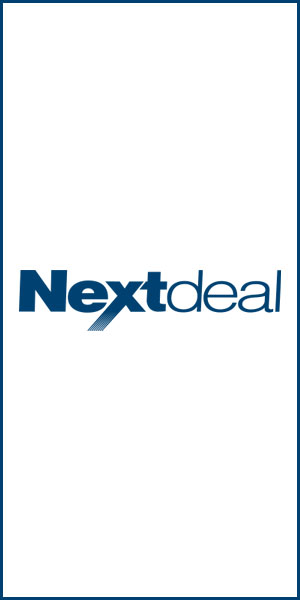 Η πρωτοβουλία του «NextDeal» να οργανώσει πριν λίγες μέρες τη συζήτηση για τα νοσοκομειακά προγράμματα ήταν επίκαιρη και πολύ σημαντική.
Η πρωτοβουλία του «NextDeal» να οργανώσει πριν λίγες μέρες τη συζήτηση για τα νοσοκομειακά προγράμματα ήταν επίκαιρη και πολύ σημαντική.
Είμαστε ξανά σε μια περίοδο που το ζήτημα, καλύτερα το αδιέξοδο, της λειτουργίας των νοσοκομειακών προγραμμάτων βρίσκεται σε ένταση.
Διαβάζοντας τα πρακτικά της συζήτησης και παρά το γεγονός ότι υπήρξαν ορισμένες ενδιαφέρουσες επισημάνσεις από τους συμμετέχοντες, η αίσθησή μου είναι ότι ό πυρήνας του προβλήματος, επειδή είναι δομικός, παραμένει. Η συζήτηση απεικονίζει ακριβώς την τέταρτης ή πέμπτης γενεάς εξέλιξη ενός καθοριστικού γεγονότος.
Στην αναζήτηση μιας διαφοροποιημένης πλέον πορείας, που ήταν άλλωστε και το κοινό μήνυμα της συνάντησης, είναι χρήσιμο να έχουμε υπόψη μας τα αίτια του προβλήματος και όχι τις διαχρονικές συνέπειές του, τις οποίες απλά εξακολουθούμε να επιχειρούμε να διαχειριστούμε.
Ήταν κάπου το 1991 όταν η Metrolife, μια ασφαλιστική εταιρεία με έντονη πωλησιακή φυσιογνωμία και με την τεχνική υποστήριξη μιας, τότε μεγάλης, αντασφαλιστικής εταιρείας (Mercadile + General), αποφάσισε να διεμβολίσει την ασφαλιστική αγορά με μια πρωτοποριακή ιδέα : Να προσθέσει στα νοσοκομειακά της προϊόντα μια φοβερή καινοτομία, την Κάρτα Νοσηλείας.
Για το σχεδιασμό του προγράμματος και το υπολογισμό των τιμών των ασφαλίστρων, μεταξύ άλλων δεδομένων και υπολογισμών, χρησιμοποιήθηκαν, όπως ήταν φυσικό, και τα τρέχοντα τιμολόγια των ιδιωτικών νοσοκομείων.
Η κρίσιμα λανθασμένη εκτίμηση στη συνολική σύλληψη της ιδέας του προϊόντος ήταν ότι δεν λήφθηκε υπόψη η πιθανότητα η εισαγωγή του να ανατρέψει πλήρως τα τιμολόγια αυτά και να μεταβάλει ριζικά το status quo του επιχειρηματικού περιβάλλοντος, όπως τελικά και δραματικά συνέβη. Η ιστορία του Marketing περιλαμβάνει μερικές εμβληματικές εισαγωγές προϊόντων που άλλαξαν δραματικά και δραστικά τις αγορές στις οποίες εμφανίστηκαν και, στην ουσία, δημιούργησαν νέες. Στη συγκεκριμένη περίπτωση των «Καρτών», αυτό πράγματι συνέβη, αλλά όχι όπως το είχαν οραματιστεί οι εμπνευστές της ιδέας. Αντίστροφα.
Μέχρι την εισαγωγή των «Καρτών» οι ασφαλιστικές εταιρείες διέθεταν νοσοκομειακά προγράμματα από απλά επιδοματικά έως πλήρη.
Σε περίπτωση εισαγωγής ο ασφαλισμένος πήγαινε στο νοσοκομείο, ενημερωνόταν για την περίπτωσή του (και το πιθανό κόστος) και η νοσηλεία προχωρούσε. Στο τέλος της νοσηλείας έπαιρνε τις αποδείξεις και τα τιμολόγια, τα εξοφλούσε και τα κατέθετε στην ασφαλιστική του εταιρεία για να αποζημιωθεί. Χωρίς πολλά λόγια, με τη διαδικασία αυτή έκανε πρακτικά έναν πρώτο έλεγχο της αποζημίωσης.
Μετά την εισαγωγή των Καρτών, αυτός , ο φυσικά ενσωματωμένος στην διαδικασία, έλεγχος ακυρώθηκε.
(Για την ιστορία, λίγοι γνωρίζουν ότι την καθοριστικής αυτής, όπως αποδείχθηκε, σημασίας διαφοροποίηση και τις συνέπειές της αντιλήφθηκε και επεσήμανε έγκαιρα ανώτατο τότε στέλεχος της Metrolife, αλλά η ευφορία από την αναμενόμενη επιτυχία ήταν πολύ μεγάλη, ώστε η άποψη αυτή να ακουστεί ).
Σύντομα, τα τιμολόγια των νοσοκομείων και των ιατρικών πράξεων άρχισαν να αυξάνονται δραματικά, αλλά, πολύ σημαντικό, ταυτόχρονα η συνολική κουλτούρα της αγοράς μεταβλήθηκε, στην ουσία χαλάρωσε και οι ασφαλιστικές εταιρείες βρέθηκαν να προσπαθούν να διαχειριστούν μια εντελώς νέα στάση των ασφαλισμένων, των δικτύων τους και των νοσοκομείων, θύματα οι ίδιες της πολιτικής τους στο Μarketing και στη διαφήμιση.
Αλλά αν όλα τα παραπάνω οφείλονται σε ένα τεχνικό λάθος, το πολύ σοβαρότερο ήταν το στρατηγικό λάθος.
Μέχρι τις Κάρτες, η αγορά των νοσοκομείων και εκείνη των ασφαλιστικών ήσαν δύο χωριστές αγορές. Για τα νοσοκομεία οι νοσηλευόμενοι ήσαν απλώς ιδιώτες. Για τις ασφαλιστικές απλώς αποζημιούμενοι ασφαλισμένοι.
Με την εισαγωγή των Καρτών οι ασφαλιστικές ενοποιήσαν τις δύο αυτές αγορές. Οι κανόνες του Marketing είναι σε τέτοιες περιπτώσεις σαφείς: τους όρους λειτουργίας της ενιαίας πλέον αγοράς τους καθορίζει ο πάροχος της υπηρεσίας που ενδιαφέρει τον καταναλωτή, εν προκειμένω τα νοσοκομεία.
Το λάθος υπήρξε στρατηγικό γιατί άλλαξε τις επιχειρηματικές ισορροπίες για πάντα. Ό,τι έγινε στη συνέχεια και γίνεται ακόμη, είναι απλώς τακτικές κινήσεις διαχείρισης της νέας πραγματικότητας από τις ασφαλιστικές εταιρείες.
Καθοριστικό για την ασφαλιστική αγορά υπήρξε το γεγονός ότι μετά την πρώτη εταιρεία, σηκώνοντας το γάντι του ανταγωνισμού, ακολούθησε αμέσως η πρωταγωνίστρια της αγοράς Interamerican, με μια πολύ ευφάνταστη μάλιστα διαφήμιση («Μόνο με τις παντόφλες και την πιτζάμα σας»).
Παρά το γεγονός ότι το πράγμα είχε σύντομα και ορατά εκτροχιαστεί, η μία εταιρεία ακολουθούσε την άλλη στην εισαγωγή της κάρτας στα προϊόντα τους. Η τελευταία που υπέκυψε το έκανε κάτω από την αφόρητη πίεση των δικτύων της, παρά την αντίθετη άποψη της διοίκησής της (NN). Τελικά μόνο μία δεν ακολούθησε (Alico).
Η ΕΑΕΕ ήρθε φυσικά αντιμέτωπη με το πρόβλημα. Η Επιτροπή Ζωής κλήθηκε να διαχειριστεί την κατάσταση και όρισε μια ομάδα από τα μέλη της (Β. Καλτσάς, Κ. Γιόνης και ο γράφων) για να μιλήσουν με τα δύο μεγάλα νοσοκομεία, Ιατρικό και Υγεία, κάπου το 1994. Όμως, ήταν προφανές ότι ήταν πλέον αργά. Από τότε οι διαπραγματεύσεις απλώς συνεχίζονται (κάτι σαν το Κυπριακό, δηλαδή).
Οι αρχικές συνέπειες της εισαγωγής των Καρτών (μεταποιημένων πλέον σε ψηφιακές πλατφόρμες) έκτοτε παρήγαγαν και παράγουν νέες, αλυσιδωτές συνέπειες, επηρεάζουν το σχεδιασμό των προϊόντων, τις πολιτικές των αποθεμάτων και φυσικά τα loss ratios παρήγαγαν λάθη και αδιέξοδα.
Επιπλέον , όπως ήταν φυσικό, ο πρώτος έλεγχος της αποζημίωσης που γινόταν από τον νοσηλευόμενο έπρεπε ξανά να εξασφαλιστεί. Αυτό επιβάρυνε σημαντικά τα τμήματα αποζημιώσεων των ασφαλιστικών εταιρειών και οδήγησε στη δημιουργία των εταιρειών ελέγχου των νοσηλειών. Αυτή η νέα αγορά ενσωματώθηκε στην όλη διαδικασία και μοιραία προστέθηκε στην ενιαία αγορά.
Μια τελευταία εξέλιξη είναι η εμφάνιση ευφάνταστων συμπληρωματικών προϊόντων, για την κάλυψη της δαπάνης των απαλλαγών.
Αυτή η εξέλιξη είναι η απόδειξη ότι το ζήτημα έχει πλέον ξεπεράσει την αγορά (την ενιαία) των νοσοκομειακών προγραμμάτων/νοσηλειών/ελέγχου νοσηλειών με τη μορφή ενός διερευνώμενου κενού αγοράς. Αυτό γιατί :
Τα ασφάλιστρα (ακόμη και εκείνα των ετήσιας ανανέωσης συμβολαίων), ιδιαίτερα των μεγαλύτερων ηλικιών, έχουν γίνει πλέον απαγορευτικά για τα μέσα εισοδήματα , σε συνδυασμό μάλιστα με τις πολύ υψηλές απαλλαγές και ποσοστά συμμετοχής. Αλλά ταυτόχρονα και το κόστος μιας καθαρά ιδιωτικής νοσηλείας αφορά σε πολύ λίγους ικανούς να το αντιμετωπίσουν.
Δηλαδή, για πρώτη ίσως φορά, ένα πρόβλημα της ενιαίας αγοράς εξελίσσεται σε πράγματι ενιαίο: Και τα ασφάλιστρα και οι νοσηλείες γίνονται απαγορευτικές για το μεγάλο μέρος των εν δυνάμει «καταναλωτών».
Είναι ίσως λοιπόν η ώρα για μια καινούργια πρωτοποριακή ιδέα που θα περάσει την ενιαία (αυτό δεν αλλάζει) αγορά των νοσοκομειακών προγραμμάτων / νοσηλειών στη «μετακαρτική» εποχή.
Αλλιώς, επειδή στις αγορές, όπως στη Φύση γενικότερα, τα κενά δεν συγχωρούνται , η λύση θα έρθει από μόνη της, συνεπώς πιθανό από αλλού.
Ίσως μάλιστα να είναι ήδη εδώ, με την πρωτοβουλία των απογευματινών χειρουργείων. Η οργανωτική ωρίμανση που προχωρεί και το μεγάλο ενδιαφέρον των γιατρών που έχει αρχίσει να εμφανίζεται, καθώς και η σιωπηλή επιστροφή τους στο ΕΣΥ που σημειώνεται αποτελούν ποιοτικές διαφοροποιήσεις άγνωστες πριν λίγο καιρό. Και να μην ξεχνάμε πως η αναβάθμιση και ο επανασχεδιασμός του ΕΣΥ είναι δηλωμένη άμεση προτεραιότητα της Πολιτείας. Αυτή η νέα διαμορφούμενη κατάσταση είναι μια εξέλιξη win-win για τους γιατρούς και την Πολιτεία, καθώς ξεπερνάει μια παλιά και πάγια δυσκολία του ΕΣΥ και δεν μπορεί να αγνοηθεί στον επανασχεδιασμό που έρχεται.
“Health Cards”, expensive premiums and what may change with the Evening Surgeries Initiation
NextDeal’s initiative to organize the debate on Hospital Care Insurance Plans a few days ago was timely and very important.
We are again at a time when the issue, or rather the deadlock, of the function of the Hospital Care Insurance Plans is in tension.
Reading the minutes of the debate and although there were some interesting points raised by the participants, my feeling is that the core of the problem, being structural, remains. The debate precisely illustrates the evolution of the fourth, or fifth era of aftermaths, originated by the pivotal event.
In the search for a more differentiated course, which was also the common message of the meeting, it is useful to bear and keep in mind the initial causes of the problem and not its temporal consequences, which we are simply still trying to manage.
It was somewhere in 1991 when Metrolife, an insurance company with a strong sales personality with the technical support of a then-large, reinsurance company (Mercantile + General), decided to disrupt the insurance market with a pioneering idea: to add to its hospital products a great innovation, the Hospital Care Card.
For the design of the insurance plan and the calculation of the premium rates, the then tariffs of private hospitals, among other data and calculations, were of course , used.
The critical misjudgment in the overall conception of the product concept was that no account was taken of the possibility that its introduction would completely overturn these tariffs and radically alter the status quo of the business environment, as eventually and dramatically happened. The history of Marketing includes some iconic product launches that dramatically and drastically changed the Markets in which they appeared and, in effect, created new ones. In the specific case of the “Cards”, this did indeed happen, but not as the initiators of the idea had envision. Vice versa.
Until the introduction of the “Cards”, insurance companies had hospital health care plans ranging from mere indemnities to comprehensive ones.
In case of admission, the insured went to the hospital, was informed about his case (and the possible cost) and the hospitalization proceeded. At the end of the hospitalization, he would receive the receipts and invoices, pay them, and submit them to his insurance company for reimbursement. To cut a long story short, by this process, he practically made an initial check of the costs.
After the “Cards” were introduced, this check, which was naturally built into the process, was canceled.
(For the record, few people know that this crucial, as it turned out, important differentiation and its consequences were noticed and pointed out in time by a top Metrolife executive at the time, but the euphoria of the anticipated success was too noisy for this view to be heard).
Soon, the hospital tariffs and doctors’ remunerations started to increase dramatically, but, very importantly, at the same time the overall culture of the Market changed, it relaxed, and insurance companies found themselves trying to manage a whole new attitude of policyholders, their sales networks and the hospitals, victims of their own marketing and advertising policies.
But, if all the above was due to a technical error, the far more serious one was the strategic error.
Until the “Cards” introduction, the Hospital and Insurance Market were two separate markets. For hospitals, inpatients were simply individuals. For the Insurers, simply compensated insureds.
With the introduction of the “Cards”, the insurance companies have consolidated these two markets. The rules of marketing are clear in such cases: the function terms of the single market are determined by the provider of the end service to the consumer, in this case, the hospitals.
The mistake was strategic because it changed the business balance forever. What happened next, and still is happening, are simply tactical moves by insurance companies to manage the new reality.
A decisive factor for the insurance market was the fact that after the first company, lifting the gauntlet of the competition, the market leader Interamerican immediately followed with a very imaginative advertisement (‘Only with your slippers and pyjamas’ ).
Even though the thing was soon and visibly derailed, one company followed the other in introducing the Card in their products. The last one to give in did so under unbearable pressure from its sales force , despite the contrary view of its management (NN). In the end, only one did not follow (Alico).
The Hellenic Association of Insurance Companies (HAIC) was, of course, confronted with the problem. The Life Committee was called upon to manage the situation and appointed a group of its members (V. Kaltsas, K. Gionis, and the writer) to speak with two major hospitals, Iatriko and Ygeia, sometime in 1994. But it was obvious that it was too late. Since then, the negotiations have simply continued. (Something like the Cyprus problem, that is).
The initial consequences of the introduction of the “Cards” (now processed on digital platforms) have since produced and are still producing new, chain effects, affecting product designs, reserving policies, and of course loss ratios, producing, in the course, mistakes and deadlocks.
In addition, as was natural, the first check of the hospital invoices made before by the inpatient, had to be reinstated. This necessity placed a significant burden on the claims departments of insurance companies and led to the creation of hospitalization costs audit companies. This new Market was incorporated into the whole process and inevitably is added to the single Market.
A recent development is the emergence of imaginative complementary products, to cover the cost of deductibles and co-insurance of the plans.
This development is evidence that the issue has now transcended the (single) Market of Hospital Care Plans / Hospitalization / Hospitalization Audit Market, in the form of an explored market gap. This is because:
Premiums (even those of annual renewal policies), particularly for older people, have become prohibitive for average incomes, coupled with very high deductible amounts and co-insurance rates. But at the same time, the cost of a purely private hospitalization is of concern to very few who can afford it.
In other words, for perhaps the first time, a single market problem is becoming a truly single one: Both premiums and hospitalization become prohibitive for a large part of potential ‘consumers’.
So, it may be time for a new innovative idea that will make the single (that doesn’t change) Market of the Hospitals and the Hospitalization Insurance to pass in the “post-card” era.
Otherwise, as the Markets, and the Nature in general, hate the gaps, the solution will come by itself, therefore probably from elsewhere.
It may even already be here, with the initiative of the Evening Surgeries. Their organizational maturation that is proceeding and the significant interest of doctors to join that is beginning to appear, as well as the also noted silent return to the National Health System (NHS) are qualitative differences unknown some little time ago.
And let us not forget that upgrading and redesigning the NHS is a stated immediate priority of the State. This new emerging situation is a win-win development for doctors and the State, as it overcomes an old and long-standing difficulty of the NHS and cannot be ignored in the forthcoming redesign.
Για μεγέθυνση πατήστε ΕΔΩ













